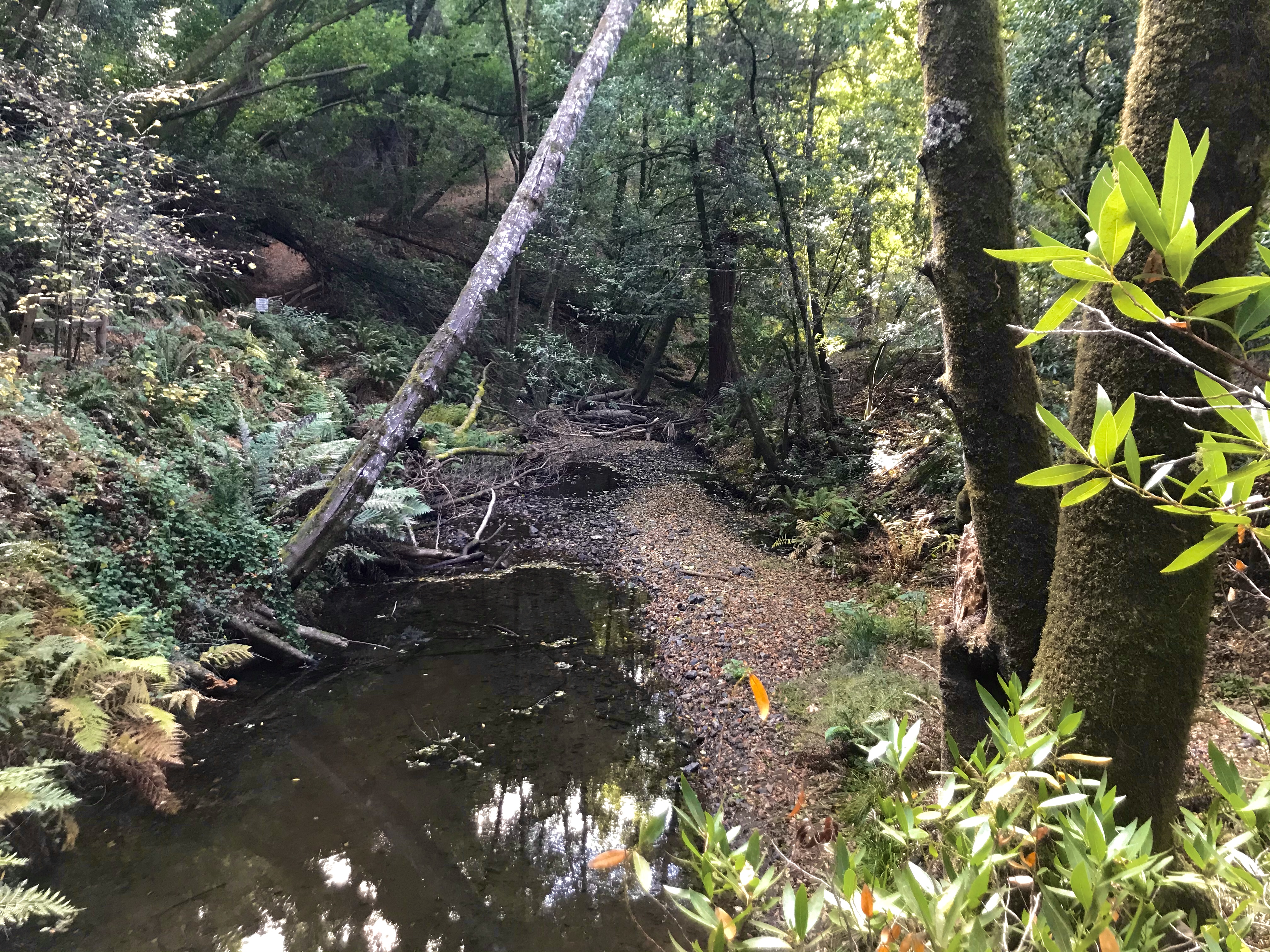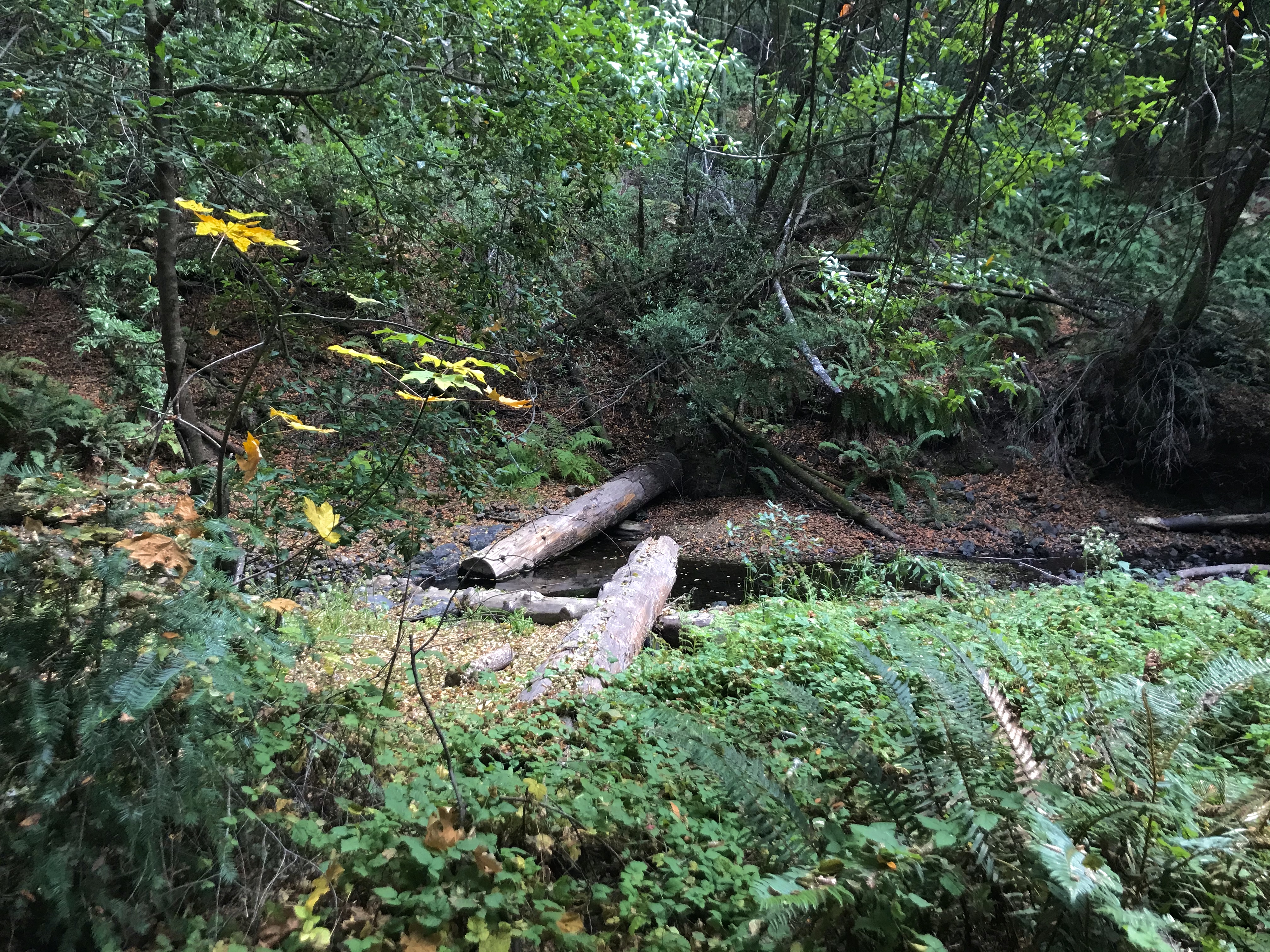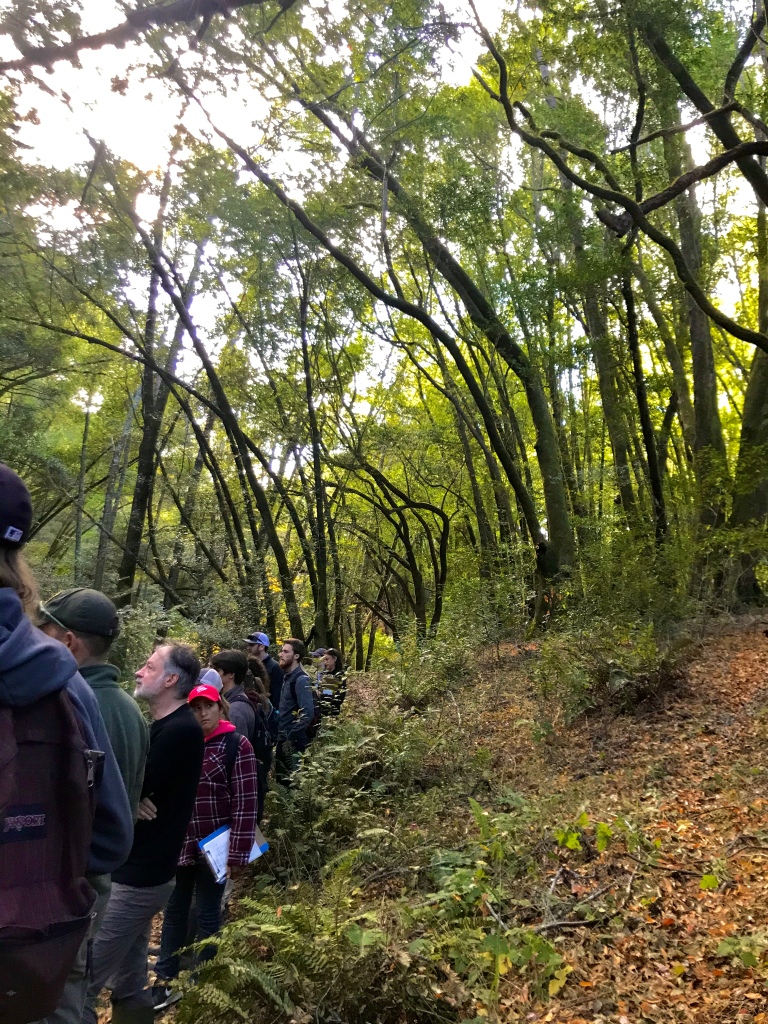On November 11, 2019, our Restoration Ecology class traveled to Marin County to see and learn about salmonid restoration sites. First we met up with Sarah Phillips, Erik Young, and Teddy Hanford at the Leo T. Cronin fish viewing area, where we all gave a brief introduction about ourselves and learned about salmonids, their life cycles, why they are endangered/threatened, and what is being done to protect them.
Restoration site #1
At our first site, we met with Preston Brown, a watershed biologist for the Salmon Protection and Watershed Network and the conservation director for the Turtle Island Restoration Network. Here, Preston and Teddy Hanford showed us the restoration work they have done to improve and restore this channel of the creek. Along the banks of the channel, they removed abandoned structures and then installed biodegradable erosion control fabric. Throughout the channel, they planted living Willows in order to, as Preston describes it, “pinball” the water through the channel and create intricate complexity. They also worked to remove invasive species and plant about a dozen different locally adapted native species, including grasses and perennial forbs.
Restoration site #2

At our second site, we visited the Turtle Island office where Preston showed us their native plant nursery that is managed by local volunteers. Then we viewed a completed restoration site and got to see photos of the site from 2016 before restoration began. By viewing these photos, we were able to see the progress they’ve made and how much riparian vegetation has grown. Preston and his team have done habitat suitability monitoring to the site and they are hoping to get a passive integrated transponder (PIT) tag array to record the presence of Coho salmon.
Restoration site #3


At our last site we visited Devil’s Gulch in Samuel P. Taylor State Park where we got to enjoy our lunch, ask questions about restoration, and chat with Eric Ettlinger, an aquatic biologist whose been working with the Marin Municipal Water District for the past 20 years. Then Erik Young led us along a beautiful trail to show us some of the restoration that has been done along Devil’s Gulch Creek, which included the placement of woody debris in the creek. Adding woody debris like large logs, trees, root wads, and branches to streams has incredible habitat benefits for salmonids as the presence of large woody debris helps decrease water temperature by shading the water, slow the flows of the water, and form pools which serve as salmon habitat. Furthermore, slowing the water allows larger sediment like gravel to fall to the stream bed which is an important material for salmon and steelhead to build redds (spawning nests) and lay eggs.
Following our walk along this beautiful trail, we ended our field trip with a assignment created by Sarah Philips to test our new knowledge of salmonid restoration. We were given a drawing of a site and had to design our own plan on where to place woody debris, either logs or roots wads, to stabilize the stream and create habitat for salmonids. We discussed our placements of the woody debris and then bid our farewells. All in all, it was a successful field trip!




